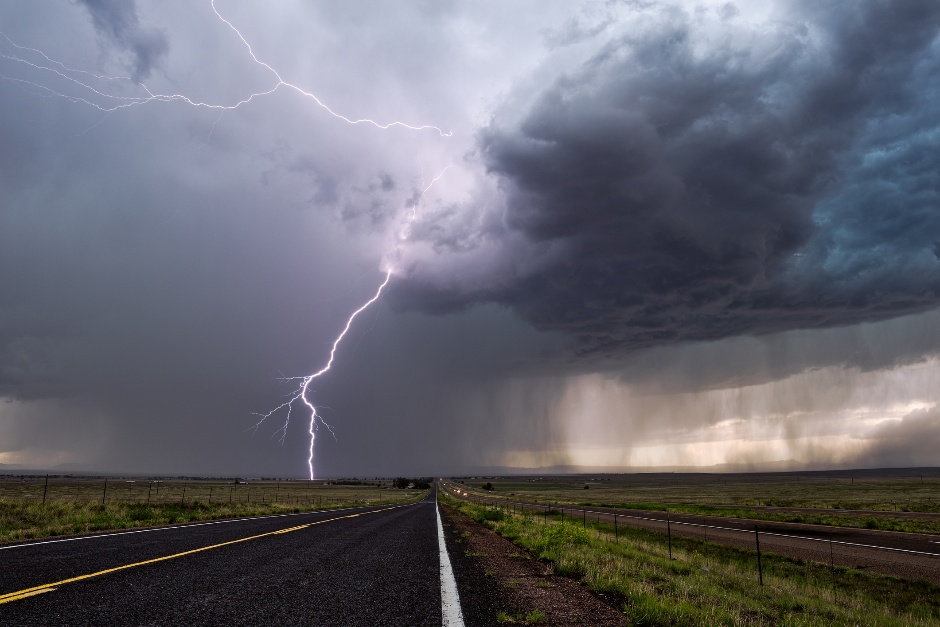
The modular data center industry is exploding as more and more organizations are recognizing the benefits of building facilities that meet today’s capacity needs, while also providing ease of scalability to keep up with future growth and changing technologies.
As you plan your next data center project, there are a variety of factors to think through to protect your investment. One critical factor to consider during data center design is natural disaster planning. Safeguarding against the possibility of severe weather events and other emergencies is key to ensuring your data center operates reliably with little to no downtime, even in the face of a potential crisis.
Choosing the Right Location for Your Data Center
The first way you can proactively avoid risks from natural disasters is by choosing the right location for your data center.
The ideal location would offer a low propensity for natural disasters along with a mild climate. This is a big part of why locations like Salt Lake City and Columbus have become increasingly popular for new data center builds.
Of course, some markets remain data center hubs despite a heightened risk of natural disasters. In the case of Silicon Valley, for example, earthquakes are a common occurrence, and experts predict that a major earthquake is likely to occur in the next 30 years. Building in areas prone to natural disasters is acceptable as long as you understand the risks and put mitigation strategies in place to combat them.
Building a Weather-Resistant Structure
A disaster-proof data center starts with a solidly constructed and well-engineered building. The blueprint, construction materials and positioning of your building can all serve to make your data center either more vulnerable or more protected in the face of disasters like storms and flooding.
Architects and builders can employ hardening techniques to make your facility more weather resistant. This is especially critical in hurricane- and tornado-prone areas.
To protect against flood damage, construct your building on higher ground so flooding is less likely to affect it. Raising data racks can help prevent flood damage if water does enter your building.
Investing in Quality Cooling Solutions
A heatwave may not look like a natural disaster to most, but it can certainly be disastrous for a data center.
All data centers produce significant amounts of heat—even when outdoor temperatures are mild—so cooling solutions are a constant necessity. These cooling solutions are even more critical in hotter climates. Cooling options include:
- Rear door heat exchangers
- In-row cooling
- Chillers
- Split systems
- Air- or water-cooled computer room air conditioning (CRAC)
- Computer room air handler (CRAH)
- Economizers
- Free air cooling
Establishing Automatic Backup Power
With major events included, the average electricity customer in the U.S. consistently experiences more than three hours of power disruptions annually—and sometimes far more than that. Some states have better track records than others for keeping the lights on, but power outages are a common occurrence across the U.S. and should factor into disaster planning.
To prepare for a possible power outage, data centers should always have backup sources of power that automatically engage when needed. Typically, this takes the form of a gasoline- or diesel-powered generator on-site.
Including redundant sources of power in your data center design can minimize or eliminate disruption in the case of a power outage.
Choosing the Right Fire Suppression and Detection System
In 2020, local fire departments responded to an estimated 1.4 million fires, which resulted in approximately $21.9 billion in property damage. Fire detection and suppression systems are critical to keep data center employees safe and to protect the equipment housed in the facility.
One fire detection measure you may want to put in place is a very early smoke detection apparatus (VESDA), which can promptly alert you to a potential fire so you can address it immediately.
There are two main types of fire suppression systems to consider during data center design, both of which offer advantages:
- Water-based sprinkler systems
- Gaseous (dry) systems
Conducting Regular Risk Assessments
The design phase of your data center shouldn’t be the only time you consider possible risks. Once your data center is operational, you should conduct regular risk assessments—preferably on an annual basis—to ensure you have the right risk mitigation strategies in place.
If you experience a natural disaster, take the time after the event to analyze the effects on your data center and see whether there are shortcomings you need to address, so you are better prepared for the next crisis.
Preparing for Natural Disasters with the Right Data Center Design
Natural disaster preparedness should be a critical part of the design process. Work closely with your modular data center team to discuss natural disaster concerns during the design phase of the project. Our experienced team at PCX can discuss your concerns and evaluate the best design for you.
Learn more about modular data centers in our infographic, "Traditional vs. Modular Data Center Design".



Comments